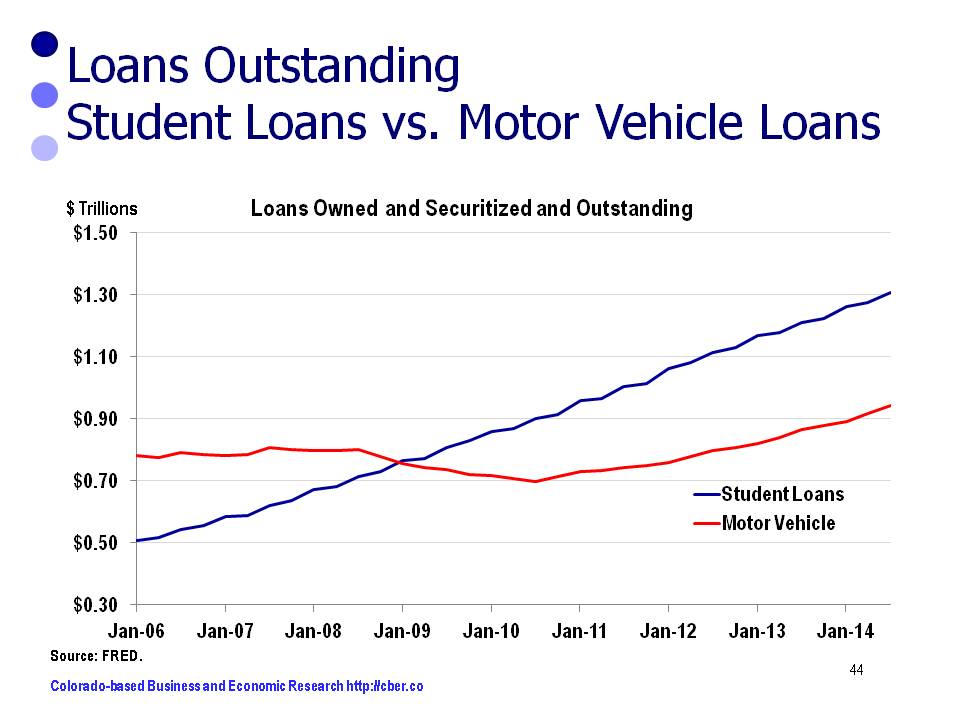In early 2003 a reporter posed the question, “Looking back, what did you miss in forecasting the 2001 recession?” In hindsight, there were two signals of greater problems.
1. Colorado construction output began to decline in 2001.
2. Employment in the Colorado Financial Activities Sector moved counter to total employment during the 2001 recession.
At that time, it was difficult to understand these trends because they were not fully developed. In the months prior to 9/11, the economy had slowed, but remained strong. Very few noticed the slowdown in construction output and those who did thought it to be nothing more than a bump in the road.
By mid-decade it became more apparent that the strength of the construction industry was waning. T-Rex was winding down and the only major activity was a smaller highway project in Colorado Springs, the Comanche Power Plant in Pueblo, and a mixture of school construction additions or improvements. In addition, housing permits, and valuation began to level off.
By 2007, housing construction began to slip and by 2008 it was clear that the industry was faced with more than a “bump in the road”. Between 2007 and 2009, 1-in-6 of the private sector jobs lost were either in construction or construction-related industries.
In hindsight, more economists and bank officials should have questioned why employees were being added in the Financial Activities Sector during a downturn. When 9/11 occurred, the economy came to a grinding halt for several days. Americans were encouraged to keep spending in hopes the country could consume its way out of the recession. At the time, that seemed to be the right thing to do.
Creative financing products (HELOCS, 0% financing, interest only loans, reverse mortgages, and others) were designed to stimulate consumption. Demand for these products increased in popularity because they allowed Americans to purchase whatever they wanted. To meet that demand, financial employment expanded between 2000 and 2007.
In 2007 a series of problems began to surface, the popularity of these products dropped off, and employment in the sector reversed trend – sharply. The industry experienced a complete melt-down – collapse of large financial institutions, the bailout of major banks by national governments, bank consolidations and closures, declines in consumer wealth, failure of top businesses, volatile equity markets, declining property values, foreclosures and evictions, and much lower interest rates.
In hindsight it is now easy to see that in 2002 there were signals that greater problems lay ahead. Given the circumstances, it is also easy to see why we looked past those warnings.

©Copyright 2011 by CBER.


